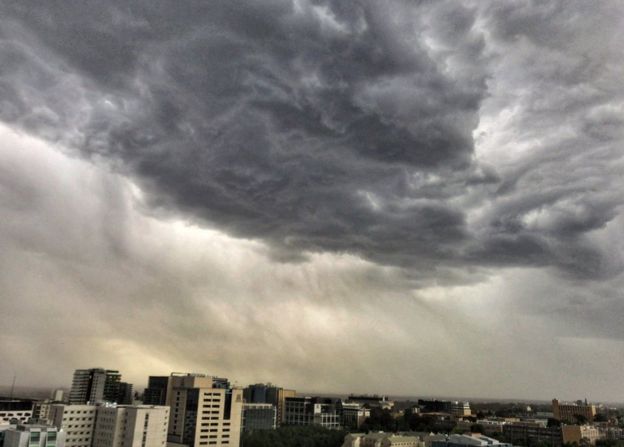It was the seemingly typical thunderstorm that rapidly escalated into a “disaster event”.
When dark clouds gathered over Melbourne, Australia, late on Monday local time, Victoria’s emergency services braced for reports of damage and possible injury.
Instead, the storm brought something far worse – a rare phenomenon called “thunderstorm asthma” that stretched paramedics and hospitals to their limits.
So how did it catch everyone by surprise?
‘Unprecedented’ level of calls
Ambulance Victoria received more than 1,870 calls between 18:00 (07:00 GMT) and 23:00 on Monday, a number more than six times the daily average.
The massive increase affected waiting times and forced 60 reserve ambulances, police and fire-fighters to respond to medical emergencies.
“It was an extraordinarily busy, it was unprecedented,” said Mick Stephenson, Ambulance Victoria’s executive director of emergency operations.
He said about 200 calls were directly linked to asthma, but 600 more reported respiratory issues.
“What we do know is that a lot of people who called last night had never had asthma before, so this was their first experience,” he said.

Local media reported the storm had been linked to two deaths, including one patient who was forced to wait 30 minutes for an ambulance.
“We’ll review each of them and we’ll know in the fullness of time whether they’re related to this particular incident,” Mr Stephenson said.
“Thirty minutes is a long time to wait for an ambulance when you’re very sick. We would not like people to wait that long.”
Victorian Health Minister Jill Hennessy said the challenging conditions forced private hospitals to open to the public.
“No doubt there will be lessons to learn… but every part of our emergency management surge occurred correctly,” she said.
What is ‘thunderstorm asthma’?
Melbourne’s thunderstorm asthma event was caused by extreme levels of rye grass pollen in the air whipped up by strong winds.
About one in 10 people have asthma in Australia, with about 80% of those sufferers experiencing allergies, particularly to rye pollen.
When saturated in rain, the pollen breaks down into smaller particles which become easier to inhale and trigger and asthma attack.
“A person who has an allergic response to that particular pollen, because it’s so small, it will get into the lungs,” Asthma Victoria chief Robin Ould told the BBC.
He said Monday’s rye particle count of 102 was more than double what would be considered high on a normal day.
Melbourne’s current spring season has been particularly wet, creating havoc for asthma and hay fever sufferers.
“It’s quite rare and we’ve seen two incidents of this kind this century in Melbourne,” Mr Ould said.
“It’s the southeast corner of Australia that has this high humidity, high thunderstorm activity at this time of the year.”
But he said the scale of Monday’s emergency could not have been predicted.
“The key message of this event is that if you have asthma, you should be using your preventative medication as described,” he said.
Reporting by the BBC’s Jay Savage.